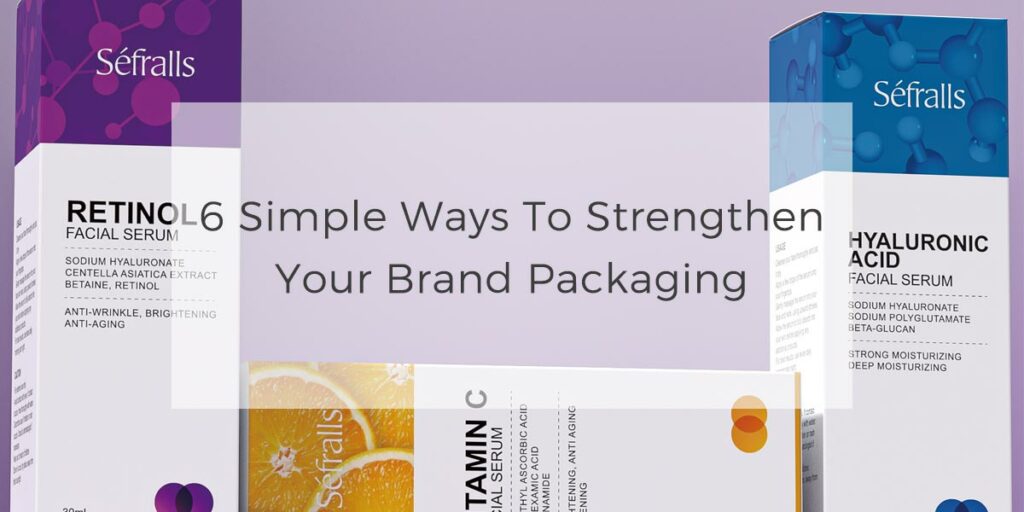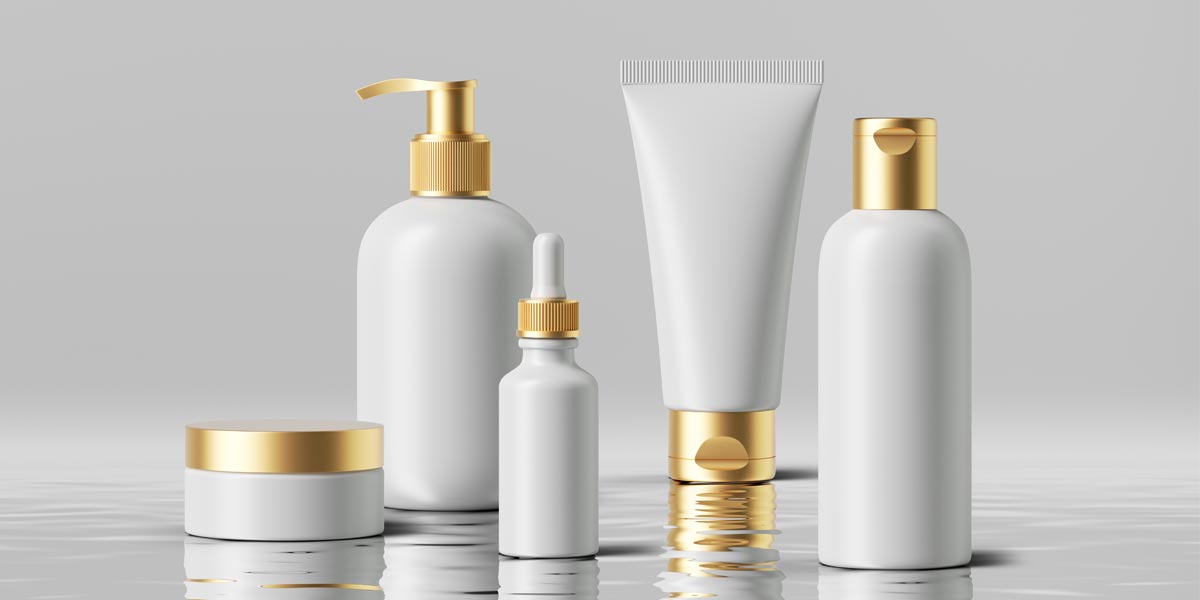When charting the path to brand success, brand packaging stands out as a vital component that cannot be overlooked. Exceptional brand packaging not only reflects the product’s appearance but also serves as a communicator of brand image and an integral part of the consumer experience. In today’s fiercely competitive market environment, how to attract consumers’ attention, shape brand image, and enhance product value through brand packaging has become a critical question that every brand needs to ponder. This article will share six simple yet practical methods to help strengthen your brand packaging, thereby winning more favor from consumers and enhancing brand competitiveness.
Using durable materials: Choosing materials with high durability is crucial for enhancing the packaging of cosmetic products. Some common durable materials include high-density plastics, glass, and metal. These materials provide good resistance to pressure and impact, protecting the products from damage. Below are several common choices of durable materials.
- High-density plastic: High-density polyethylene (HDPE) or polypropylene (PP) are common types of high-density plastics that typically offer good durability and impact resistance. They can effectively withstand compression and collisions while being relatively lightweight, making them suitable for various types of cosmetic packaging.
- Glass: Glass is an extremely durable material that offers excellent protection and is resistant to deformation or breakage. It also boasts outstanding appearance and transparency, allowing for the display of the texture and color of cosmetics.
- Metal: Metal packaging is commonly used for high-end cosmetic products such as perfume bottles or exquisite powder compacts. Metal materials such as aluminum or stainless steel offer excellent durability and a premium feel. However, they are relatively heavy and require more cost and resources for transportation.
- Composite materials: Composite materials are composed of two or more different materials combined and typically exhibit superior performance compared to single materials. For example, composite materials consisting of layers of plastic and metal can combine the strength of metal with the lightweight properties of plastic, providing enhanced protection.
- Hardboard: For certain cosmetic products like boxed cosmetics or gift sets, hardboard is a common choice for durable packaging material. It offers a certain degree of resistance to pressure and impact while being relatively lightweight and environmentally friendly.
Adding cushioning layer: The cushioning layer in cosmetic packaging is added to protect the product from damage during transportation and use. When selecting cushioning packaging materials, it’s important to consider factors such as material performance, cost, and environmental impact to ensure effective protection of the product during transportation and use. There are many cushioning packaging materials available, such as bubble wrap, honeycomb cushioning paper, as well as the following common cushioning layer materials used in cosmetic packaging.
- Honeycomb cushioning paper: Honeycomb cushioning paper consists of a series of interlocking honeycomb-shaped cardboard, offering excellent resistance to pressure and compression, effectively protecting the product.
- Filler beads: Filler beads, such as foam beads or paper beads, can fill the space inside the packaging box, securing and protecting the cosmetic product from movement and damage during transportation.
- Cardboard: Cardboard can be used as a cushioning layer for some cosmetic products. For example, adding a layer of cardboard at the bottom or around the product box can increase the structural strength and cushioning performance of the packaging.
- Foam fillers: Foam fillers, such as foam plastic or foam paper, are lightweight and soft, providing good cushioning effects to prevent the product from being damaged during transportation.
- Bubble wrap: Bubble wrap is a common packaging material made of plastic film with many air bubbles. These bubbles can effectively absorb impact and vibration, protecting the product from damage.
Optimizing packaging design: To enhance the brand image and attract consumers through the packaging design of cosmetic brands, several considerations can be made.
- Innovative packaging structure: Designing unique packaging structures or functionalities can enhance consumer experience and convenience. For example, consider creating easy-to-open and close bottle caps, sprayers, or pump heads, or incorporating reusable packaging accessories.
- Highlighting product features: Packaging design should emphasize the features and advantages of the product, such as key ingredients, product efficacy, or usage methods. Clearly communicate the product’s value and characteristics through images, text, or graphics.
- Enhancing packaging texture: Opt for high-quality materials and meticulous craftsmanship to elevate the texture and tactile experience of the packaging. Consider using special coatings, hot stamping, or embossing techniques to add a sense of luxury and quality to the packaging.
- Highlighting brand identity: Packaging design should emphasize the brand’s identity, including logos, brand names, and slogans. Ensure that these elements are prominently displayed on the packaging and consistent with the brand image to enhance brand recognition.
- Emphasizing visual appeal: Utilize visually captivating designs, including colors, patterns, and layouts, to attract consumers’ attention. Choose a design style that aligns with the brand positioning and product characteristics, making the packaging stand out on the shelves.
- Considering the target market: Understand the preferences and needs of the target market and tailor the packaging design according to consumer preferences. For example, different design elements and styles can be used for consumers of different ages, genders, or cultural backgrounds.
Adding an external protective layer: Adding an external protective layer is an important method to enhance cosmetic packaging, protecting the product from contamination, moisture, physical damage, and other factors.
- Environmentally friendly packaging materials: When designing an external protective layer, it’s also important to consider the environmental impact of the materials used. Opt for recyclable or biodegradable materials such as biodegradable paper or bio-based plastics to minimize the packaging’s negative impact on the environment, while also reflecting the brand’s sense of social responsibility.
- Waterproof packaging: For certain cosmetics, such as water-based or liquid products, it’s advisable to consider using waterproof packaging materials to prevent the product from becoming damp or leaking.
- Protective film: Adding a protective film on the surface of the product can prevent it from contamination and scratches. This film can be transparent or printed with brand logos and product information, serving as a form of advertisement.
- Plastic sleeve: Adding a plastic sleeve to the product packaging can effectively protect the product from contamination and moisture. This sleeve is typically transparent, allowing consumers to see the color and texture of the product, particularly for cosmetics like lipstick, eyeshadow palettes, etc. Additionally, it helps prevent the product from getting scratched or damaged during transportation.
- Sealed packaging: For liquid or powdered cosmetics, sealed packaging such as sealed caps or ziplock bags can be used to prevent product leakage or contamination from external sources.
- UV-resistant packaging: If the product is prone to degradation from exposure to ultraviolet (UV) light, consider using UV-resistant packaging materials to extend the product’s shelf life and maintain its quality.
- Anti-counterfeit labels: Adding anti-counterfeit labels or seals can enhance the security and reliability of the product, preventing the occurrence of counterfeit and pirated products, and providing consumers with more confidence and assurance.
- Outer packaging box: Designing an additional outer packaging box to be placed outside the original product packaging can provide extra protection, preventing damage to the original packaging. It also offers more display space for brand identification and product information.
Proper labeling and warnings: Displaying labels and warnings on branded cosmetic packaging enhances brand image, strengthens product information dissemination, and ensures consumers can safely and correctly use the product.
- Brand identity:
- Logo design: EnsuWarnings and precautions:re that the brand logo is clear, prominent, and aligned with the theme and packaging design of the product. The logo should occupy a prominent position on the packaging to enhance brand recognition.
- Brand name: Display the brand name on the packaging using legible fonts and a clear layout to ensure consumers can recognize the brand at a glance.
- Brand slogan: If available, add a brand slogan or tagline on the packaging to enhance brand image and communicate brand values.
- Product information:
- Product name: Clearly display the product name to ensure consumers can easily identify it. You can use prominent fonts, colors, or design elements to highlight the product name.
- Product efficacy: If the product has specific benefits or features, clearly display them on the packaging to attract consumer attention.
- Usage instructions: Provide simple and clear usage instructions to help consumers use the product correctly.
- Ingredients list: Display the product’s ingredients list on the packaging to inform consumers about the product’s formula and components, meeting consumers’ demands for transparency and safety.
- Warnings and precautions:
- Safety warnings: Clearly indicate necessary safety warnings on the packaging, such as avoiding contact with eyes, for external use only, etc., to ensure consumer safety.
- Expiry date and storage conditions: Display the product’s expiry date and optimal storage conditions on the packaging to remind consumers to store and use the product in suitable environments.
- Sensitivity warnings: If a product may cause allergic or allergic reactions, appropriate warnings should be included on the packaging to remind consumers to perform a skin test before use.
Using tightly sealed packaging: Utilizing tightly sealed packaging protects the product from external environmental factors, ensuring its quality and safety. Several practices can be implemented for this purpose.
- Using seal integrity testing: Conduct seal integrity testing during the product packaging design phase to ensure that the packaging can effectively seal under different conditions (such as temperature, humidity, etc.). Various methods such as pressure testing, vacuum testing, or water tightness testing can be used for evaluation.
- Adding seal indicators: Include prominent seal indicators on the packaging, such as seal stickers or seals, allowing consumers to easily determine whether the product has been opened or used.
- Avoid re-packaging: It is advisable for consumers to avoid re-packaging products as re-packaging may compromise the original seal, leading to loss of shelf life or quality of the product.
- Choosing the right sealing materials: Opt for high-quality sealing materials such as sealing tapes, films, or plastic wraps to ensure effective packaging sealing. These materials should possess good elasticity and durability, effectively preventing air, moisture, and contaminants from entering the packaging.
- Coordinating with packaging containers: Ensure that the packaging containers themselves have good sealing performance, including bottle caps, sprayers, or lids, as well as sealing gaskets between the container and lid.
- Optimizing packaging structure: Design packaging with consideration for sealing, ensuring that the packaging structure can be fully sealed without any leaks or gaps. Utilizing double-layer or multi-layer sealing structures can enhance sealing performance.
- Precise manufacturing processes: Ensure the precision and consistency of manufacturing processes to maintain the quality and sealing performance of sealing components. Avoid occurrences of looseness or incomplete sealing.
In today’s fiercely competitive market environment, brand packaging is one of the key factors for attracting consumers and enhancing brand value. By adopting the six simple methods mentioned above, you can effectively strengthen your brand packaging, enhance brand image, and increase market competitiveness. Don’t miss any opportunity to solidify your brand position, as every subtle change can impact your brand’s success. Meanwhile, to stay updated on more information about brand building, marketing strategies, and the latest industry trends, please follow our official account. Let’s work together to create a brighter future for your brand!




